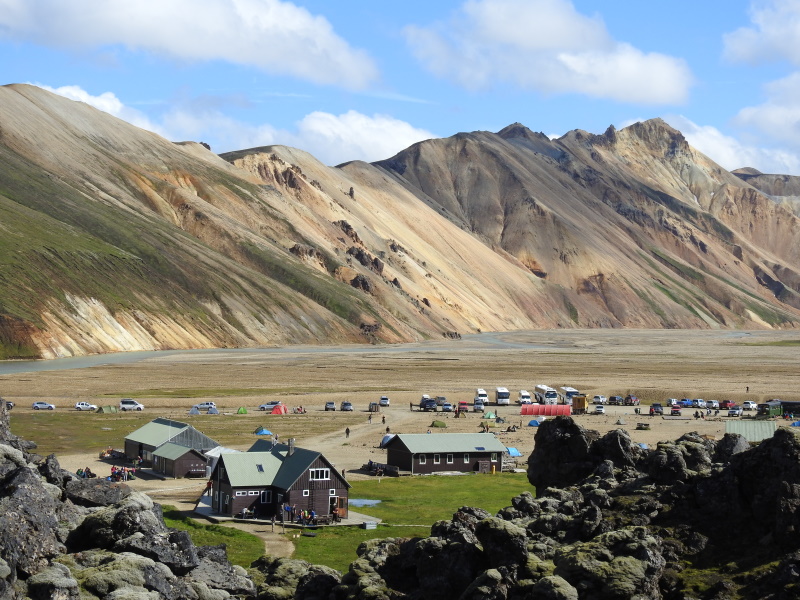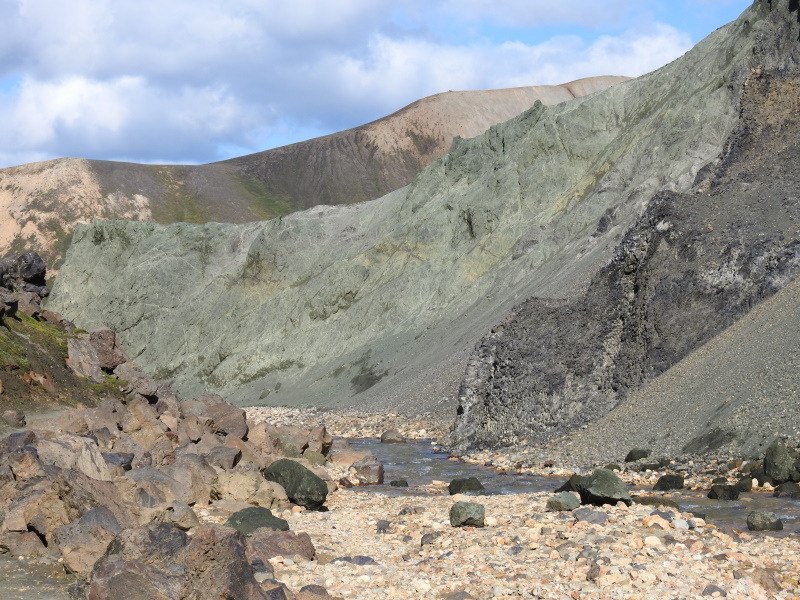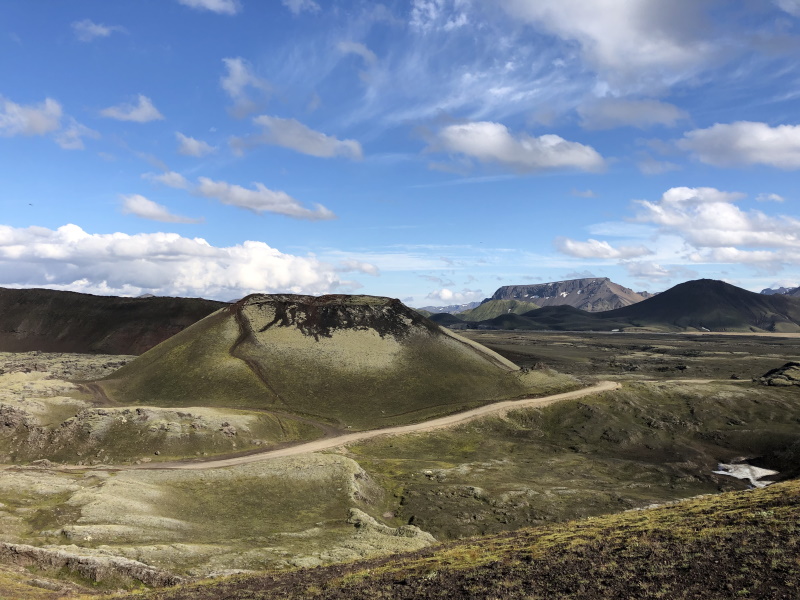Blog TWHS Visits
Fjallabak
The Icelanders keep on having difficulties to provide catchy names for (possible) WHS - the Torfajökull Volcanic System / Fjallabak Nature Reserve is just another example. I will just call it Fjallabak. “Landmannalaugar” may even be a better choice, as it is the best known and most spectacular part. The Torfajökull volcano created this colourful landscape with its rhyolitic lava flows.
With a "normal" 2WD car, almost the entire interior of Iceland is off-limits: the roads here are unpaved and you have to traverse a river every now and then. So I booked a super jeep tour to Landmannalaugar to still be able to see some of the inland and this TWHS. The drive out there from Reykjavik took about 3 hours. After entering Fjallabak we first held a short stop at Ljótipollur, a crater lake with red colored walls and bright green spots. It is filled by groundwater.
At Landmannalaugar we arrived in a sun-drenched valley where fellow tourists walked around in t-shirts and shorts. You really arrive to something here: it is perhaps the busiest place in all of Iceland! Dozens of cars were parked there and just as many tents were pinned on the rocky surface of the campsite.
There are 2 major things to do here: enjoy one of the geothermal hot pools or go for a walk. I choose the latter and followed our tour guide for a hike of about 2 hours. The trails are marked so it is quite easy. From the ridge behind the Landmannalaugar camping complex there are good views into the valley and right at one of the colorful mountain walls for which this area is famous. These many colors are due to the rhyolite rocks that are light in color and consist of small crystals. In the sunlight it lights up and takes on a white, yellow, pink, brown or gray-green color.
The valley lies on the edge of the Laugahran lava field, which was formed after a volcanic eruption in 1477. While hiking at the back of the mountain ridge plumes of smoke are visible: they come from the hot sulfur springs. We walked straight through the lava field back into the valley. It required some scrambling but there is still a well-marked trail. The lava field contains much of the rare obsidian or volcanic glass.
The last part of the trail we took is flat and runs parallel to a river, opening up yet another piece of scenery. One of the mountain walls here is even green. There is also said to be a blue mountain, but it did not show its color very well today. Back in the valley it felt like walking in a desert, it could be Namibia. Many hikers here are preparing for the 4-day Laugavegur trek, which runs for 55 kilometers through Iceland's interior. You can stay overnight or camp in mountain huts.
On the way back to Reykjavik we drove a different route. Twice we met a group of tourists on horseback: riding the native small horses is also a popular activity here. We hoped to catch a glimpse of the volcano Hekla, but unfortunately it was already hidden behind clouds. We did drive through a spectacular volcanic landscape again though.
This is a truly spectacular place and writing this a week after my visit – at the end of my Iceland trip – I can say that Fjallabak belongs to my top-3 of sights in this country and it would be a worthy WHS.
Els - 23 August 2020
Comments
Randi Thomsen 23 August 2020
I agree, this place is worth an inscription!
We did the trip with our small 4x4. There are no river crossings if you enter from the north. It seems like we also hiked the same route 😊


